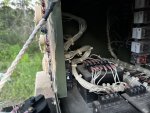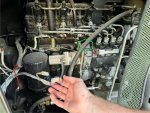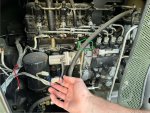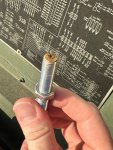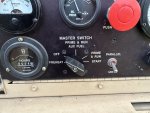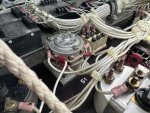Jdj211
New member
- 19
- 19
- 3
- Location
- Houston, TX
Hello, I just got an MEP-804A and after giving it a once over, I started it up. It ran for about 60 seconds before it shut down. The “under voltage” light was lit. I turned the master switch to the off position, then back to prime & run, then hit the button to test/reset the fault lamps. When I try to start it again, it will crank but won’t start. I did put in about 3 gallons of fresh diesel prior to starting it, and the gauge is reporting about 1/4 tank. While it was running it was under no load and the AC contractor was not closed.
I searched for under voltage in the TM’s and only found a basic procedure to verify battery voltage. The batteries are both brand new and fully charged. I’m reading 25.1VDC across them. Is there somewhere else in the control panel I should verify this?
I’m thinking perhaps the under voltage was more of a symptom than a cause of my issue. My uneducated best assumption is that the engine isn’t getting fuel for some reason. I am not a mechanic so I wanted to check with the experts before I make things worse.
My next thought was to see if somehow there is air in the fuel lines but I’m not exactly sure how to verify or correct that. I’m sure it’s in the manuals, and I am searching through them currently.
I searched for under voltage in the TM’s and only found a basic procedure to verify battery voltage. The batteries are both brand new and fully charged. I’m reading 25.1VDC across them. Is there somewhere else in the control panel I should verify this?
I’m thinking perhaps the under voltage was more of a symptom than a cause of my issue. My uneducated best assumption is that the engine isn’t getting fuel for some reason. I am not a mechanic so I wanted to check with the experts before I make things worse.
My next thought was to see if somehow there is air in the fuel lines but I’m not exactly sure how to verify or correct that. I’m sure it’s in the manuals, and I am searching through them currently.


